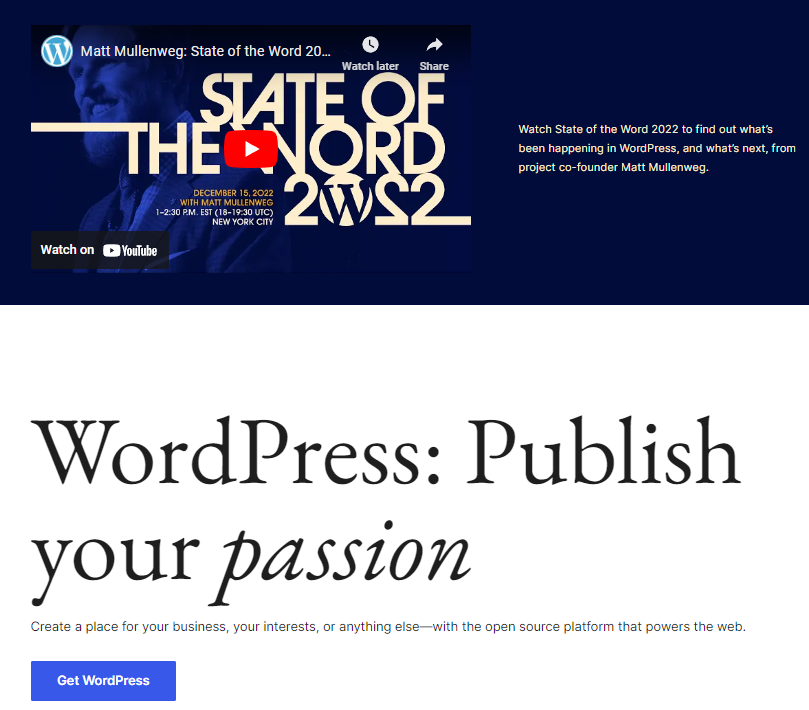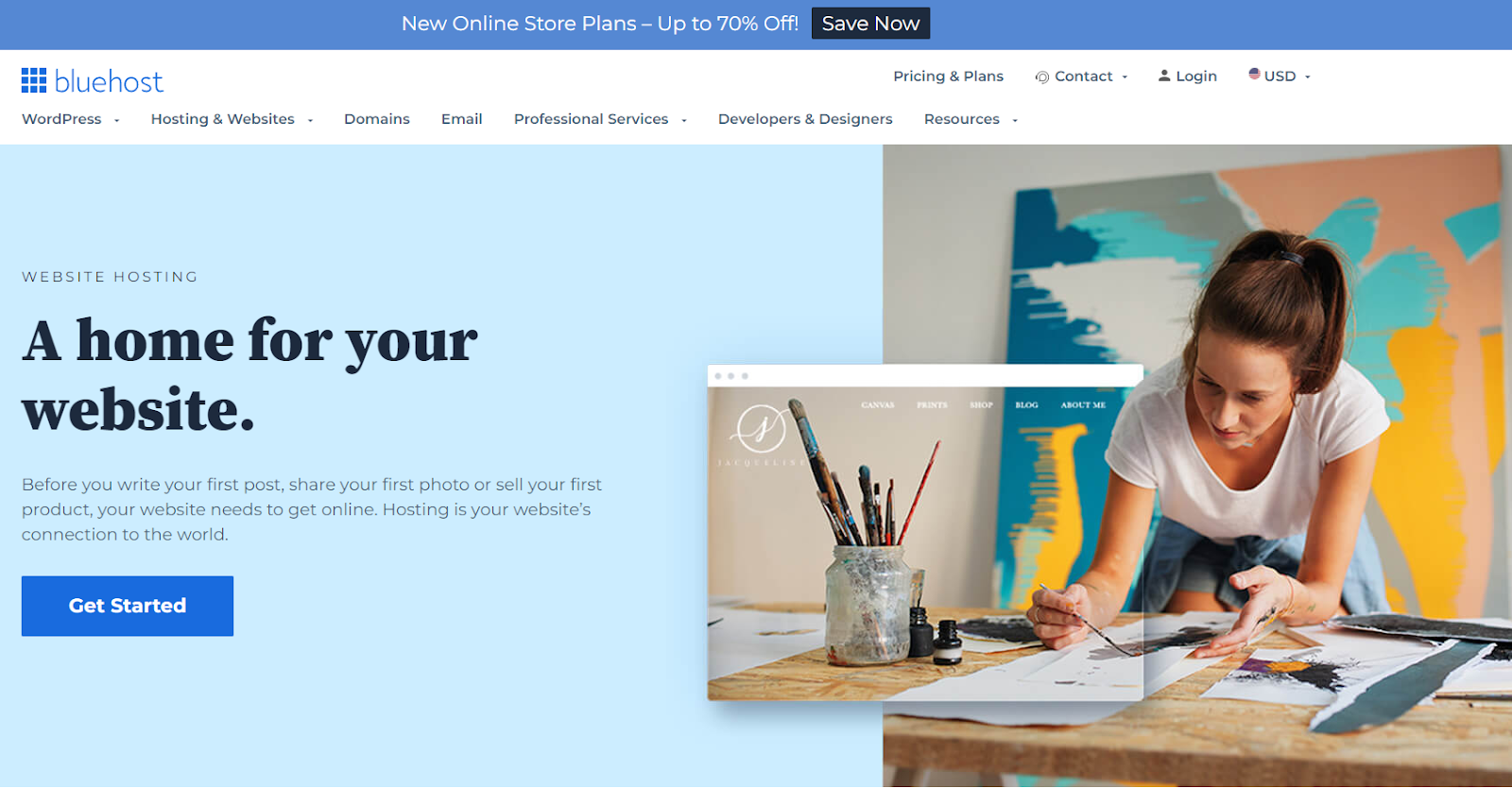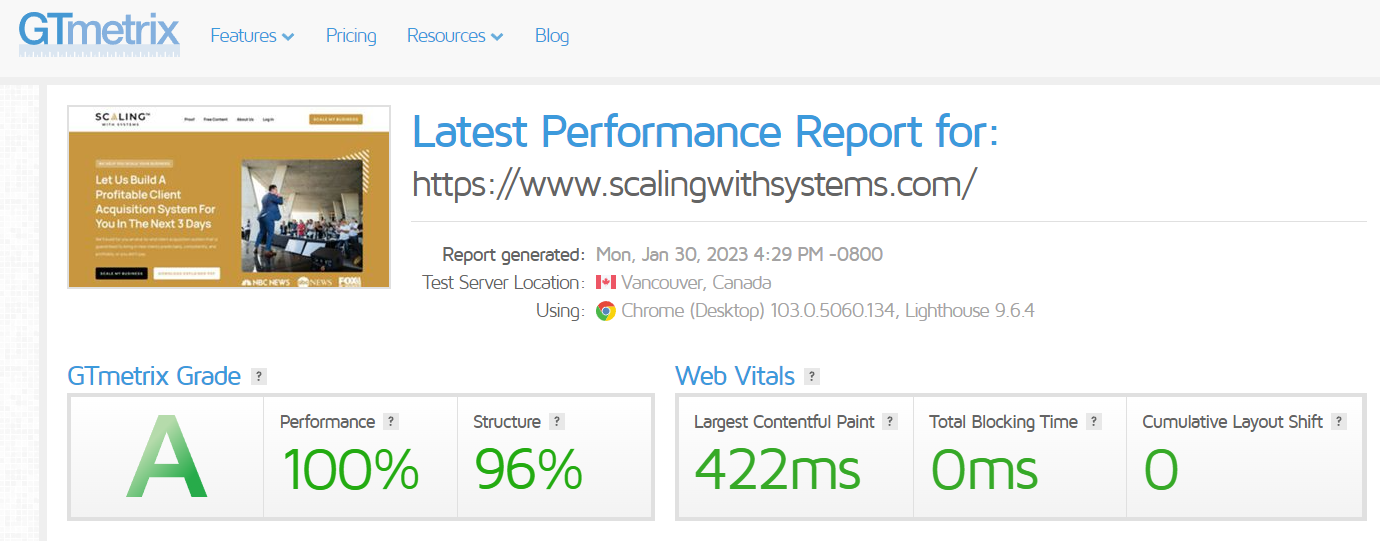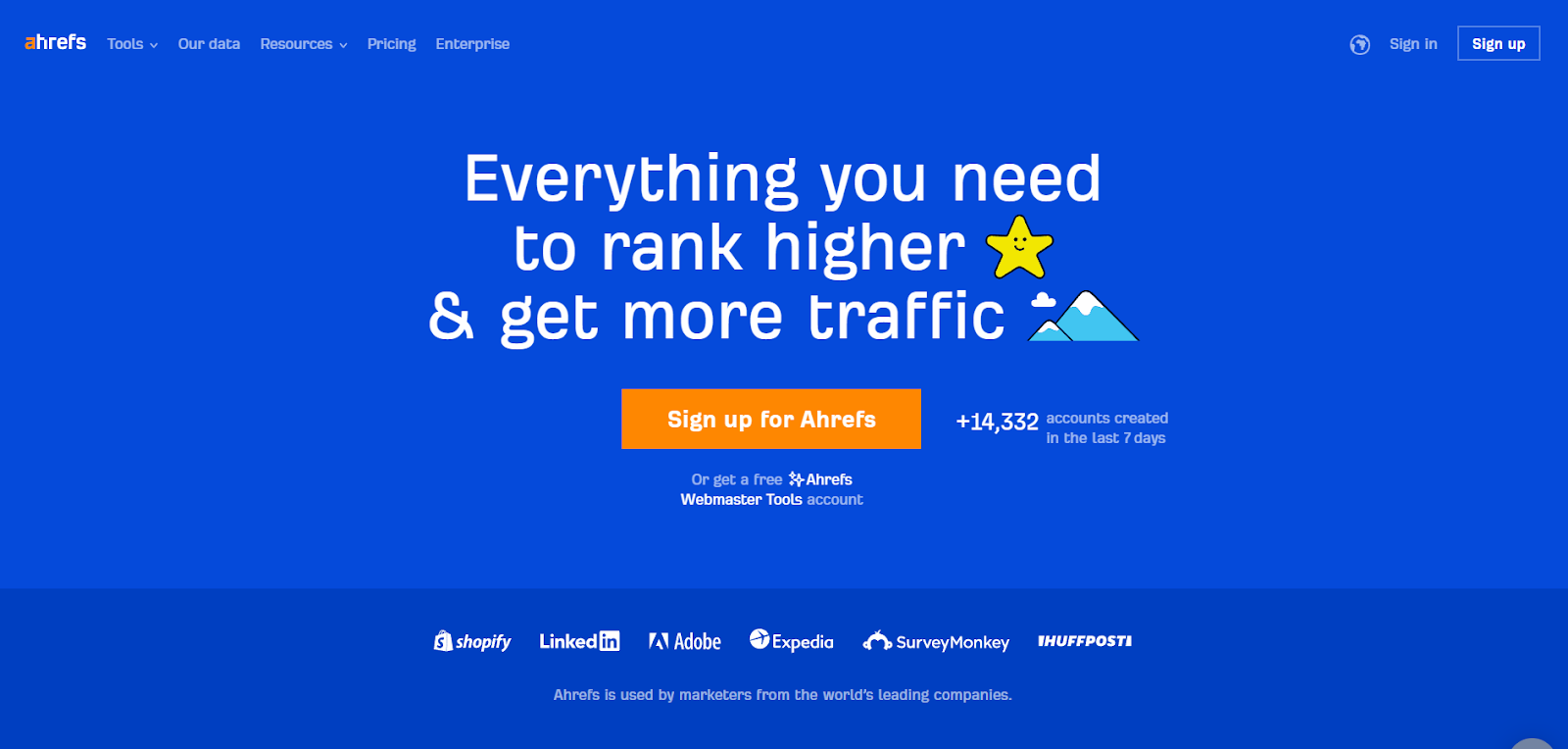Want to win over your ideal audience, skyrocket brand awareness, and boost profits? Learn how to grow your business online.
Starting and running a business can be a challenging but rewarding experience.
In today’s hyper-connected world, it’s become increasingly crucial for businesses to have a robust online presence.
Here’s the thing: Customers are turning to the web to research products, compare prices, and make purchasing decisions.
76% of consumers research a company’s online presence before visiting in person.
Smart business owners should take advantage of the online market to reach a wider audience, increase their visibility, and ultimately boost their bottom line.
In this article, you’ll learn how to grow your business online. We’ll also share some super actionable tips for getting paying customers to queue up at your online business.
Select The Right Platform For Your Website
Small businesses often make a critical mistake when selecting a platform for building their website. Choosing the wrong one can be costly and be a massive hurdle if you want to grow your business online.
We suggest going with the most popular and trusted option: WordPress. With a commanding 63.5% market share, it powers both small and large businesses alike, making it a clear choice.

Note that we’re referring to WordPress.org and not WordPress.com, which are different platforms.
Starting a self-hosted WordPress site requires both a domain name and web hosting. (Yes, they’re separate).
Hosting companies offer various plans for different-sized websites, each with a distinct price point. For beginners, we recommend Bluehost.

Bluehost is a top hosting provider and is officially recommended by WordPress. They offer WPBeginner users a free domain and discounts on hosting, allowing you to get started for just $2.75/month.
Design Your Website To Serve Your Target Audience
A lasting first impression is crucial when looking to grow your business online. Visitors form their opinion about your site in a mere 50 milliseconds.
Have a design that showcases professionalism, trustworthiness, and value.
Always keep your target audience in mind to ensure that your design is top-notch. Consider their needs and preferences, and tailor the user experience to them.
For instance, if you’re targeting an older demographic, having large font sizes and clear navigation might be crucial. On the other hand, incorporating interactive elements might be a good idea if you’re targeting younger, tech-savvy users.
Good website design isn’t just about looks; it can also impact conversions and bounce rates.
If your current website isn’t delivering the desired results, a redesign might be in order. Don’t be afraid to make the investment; it’ll pay off in the long run.
A well-designed website will help visitors quickly understand your business and why they should trust you, helping you grow your business online.
Optimize Your Website’s Speed
Website speed is a crucial aspect of any website. A fast-loading website provides a better user experience and will also help you grow your business online.
Here’s why: People expect websites to load quickly and efficiently in today’s fast-paced digital world. Visitors will likely become frustrated if your website takes too long to load and move on to a competitor’s site.
A 2-second delay in your website’s load time will result in abandonment rates of up to 87%.
A fast website can improve search engine rankings, as Google and other search engines take website speed into account when determining search engine results.
GTmetrix is a free online tool to test your website’s loading speed. You should aim for a score above 90 for a better user experience.

So, how can you increase your website speed? Here are five tips to get you started:
- Optimize images: Large images can slow down your website. So, compress and optimize the images before uploading them.
- Leverage a Content Delivery Network (CDN): A CDN distributes your website’s content to multiple servers worldwide. That’s how it reduces the distance data travels and speeds up the load time.
- Minimize HTTP requests: Every time a page loads, it sends multiple requests to the server. Minimize these requests to speed up your website.
- Enable browser caching: Browser caching helps store frequently accessed website data on a user’s device. That reduces the amount of data that needs to be loaded each time they visit your site.
- Use a fast hosting provider: A fast and reliable hosting provider can significantly impact your website’s speed.
Make It Easier To Find The Key Information
Gone are the days when the on-page time was a critical ranking factor. Google is working towards ranking websites with content that is helpful for visitors and is easier to find.
There is no need to write 300 words of intros and content that take an hour to go through just to keep the user engaged on the website.
Writing helpful content is one of the easiest ways to grow your business online. You need to make it convenient for your website users to find the key information they want. Here’s how you can do that:
- A summary section: Add a summary section at the beginning of your articles and try to answer your visitors’ queries in that section in 3–4 lines. Don’t hold on to the key information; share it with your users right off the bat.
- Know Your Audience: Think like your website’s users by understanding their needs and desired outcomes. This insight will guide you in deciding the right type of content and format to feature on your website. You can get this information through web analytics and customer feedback.
- Headings and Subheadings: Divide your content into digestible sections with clear and descriptive headings and subheadings. Help users scan your page easily and quickly find critical information. Ensure the headings accurately reflect the content they introduce and follow a consistent format.
- Emphasize Key Points: Use visual cues such as bullet points, bold text, or larger font sizes to bring attention to crucial information. This technique also breaks up the dense text and increases readability.
- Optimize Search: Enhance user experience with a search function that’s easily accessible and effective. Allow users to search for specific keywords or phrases and consider advanced features like filters or autocomplete suggestions.
- Navigation & Structure: Design an intuitive navigation system to help users find what they’re looking for quickly. Organize information into sections with clear labels and ensure the navigation menu is easily accessible from any page. Use breadcrumb navigation to show users their location and provide context. Consistent structure and logical organization throughout the website will make navigation seamless.
Create A Mobile-Friendly Design
Budding entrepreneurs still learning how to grow a business online often make the mistake of not optimizing their websites for mobile users.
Did you know over half of all internet users are browsing from their smartphones, not computers?
That’s a huge potential consumer base, and if your website isn’t optimized for mobile, you’re risking alienating them.
Consider a revamp that prioritizes the mobile user experience. Also, adapting your website to be more mobile-friendly doesn’t have to cost a fortune. With platforms like WordPress, creating a mobile-first website from scratch is easy and affordable.
So, what changes can you make to improve the mobile experience for your users? Here are some ideas to implement to help you grow your business online:
- Optimize images: Correct the images’ size to reduce the time and bandwidth needed for rendering graphics.
- Avoid using flash videos: Most mobile devices have difficulty displaying them, leading to a poor user experience.
- Simplify Navigation: Use a clear, concise navigation menu with well-labeled options for easy navigation and a better user experience on mobile devices.
- Make elements tappable: Replace small text links with larger, easily tappable icons for an improved user experience on mobile devices.
- Ensure easy functionality: Design the website to be manageable on a small screen for a better mobile experience.
Leverage Email Marketing
For those still wondering, “How can I grow my business online?” Here’s the answer: Email marketing.
Email marketing is a cost-effective way to reach and engage your target audience. With an average return of $42 for every $1 invested, it’s no wonder it’s a popular choice for businesses looking to expand.
Utilize an email marketing platform to communicate easily with your subscribers and keep them up-to-date with your business.
You can use email marketing to achieve various goals, including sending newsletters and promoting sales. Businesses can also use it to gather customer feedback, conduct surveys, share important updates, etc.
If you don’t have an email list yet, here’s a great article that discusses how to find the email addresses of your prospects.
Create A Blog On Your Website
Blogs remain a valuable asset for businesses looking to increase their online presence and attract leads. Companies with blogs generate 67% more leads on average than those without.
Blogging is a simple way to build a following and promote your content. Publish specific and targeted content to attract potential customers who are interested in what you have to offer.
To grow your business online, optimize your blog for search engines and ensure that the topics you cover align with the interests and concerns of your target audience. This will help you reach and engage with the right people and drive sales.
Help Visitors Find Your Site In The SERP
You must maximize your website’s visibility in the SERPs to attract traffic and boost your business. To achieve this, focus on your website’s search engine optimization (SEO).
Only 0.44% of Google users visit the second page of results. So to grow your business online, you need to appear on the first page of the SERP.
There are over 200 factors that Google considers before ranking a particular website.
Here are some ways you can improve your search engine rankings:
Keyword Research
If you are a new site owner still figuring out the big question, “How do I grow my business online?” you need to go after the low-hanging fruits.
The broader the keyword you target, the higher the competition will be. You need to find more specific keywords and include them in your content marketing strategy.
Use tools such as Ahrefs or Semrush to find low-competition keywords. Look for keywords with a K/D less than 15 and create optimized content to rank for them.

Helpful Content
The content you churn out shouldn’t just be for Google to bless you with better rankings. Instead, it should be written to fulfill your users’ search intent.
You shouldn’t stuff keywords or use black-hat tactics to achieve the rank. Even if you are successful in doing so, that victory will be short-lived, and a single Google update might decimate your rankings.
Topical Authority
Topical authority can play a significant role in improving a website’s rankings. You can establish yourself as an expert and credible source of information on a specific topic in Google’s eyes.
To achieve that, you’ll have to create a topical map around your keyword, answering every possible query your audience might have. AnswerThePublic is an excellent place to start building your topical map.

You can answer some queries as a keyword cluster in a single article. Some of these queries might not be related and need to be answered in dedicated articles of their own.
Backlinks
Backlinks, also known as inbound or incoming links, are hyperlinks from other websites that lead back to your website. These links act as endorsements from other websites to Google that your content is worthy of receiving traffic.
Backlinks can play a significant role in improving your website’s visibility. But before you run off to build backlinks to your website, you need to understand that building bad-quality backlinks will result in a penalty from Google.
The backlink’s spam score needs to be low. Also, even building good backlinks might land you in hot waters. The key is your website needs to be shared on social websites organically before you build backlinks.
This sends social signals to Google that you are receiving traffic from social websites and might be the reason for the new backlinks you create.
To get backlinks from high-authority websites, you’ll need to outreach them through cold emails. Remember, it needs to be a two-way street when asking someone for a backlink; you’ll have to offer them some value against the backlinks.
Leverage Social Media To Drive More Traffic
Social media marketing is the most obvious solution to the question, “How to grow my business online.” Over 4.89 billion people are expected to use social media globally in 2023.
Facebook remains the king of social media, with 2.96 billion active monthly users. However, it’s crucial to select the right platform for your business.
For instance, LinkedIn is ideal for recruitment agencies, while Instagram is perfect for photography studios.
Here are ten expert tips for growing your following on social media:
- Choose your platforms wisely: Focus on the social media platforms where your target audience is active.
- Consistency is critical: Regular posting is a must to stay connected to your audience. Don’t take long gaps between posts.
- Share valuable, relevant content: Ensure you have something worth offering your audience.
- Maintain a consistent brand voice: Stay true to your brand’s messaging to avoid confusion.
- Engage with your followers: Respond to comments, run polls, share their posts, etc.
- Think before you post: Social media is informal, but remember you’re representing a business.
- Optimize post times: Cater to your audience’s most active times and time zones.
- Use visuals: People respond positively to images and graphics and share them often.
- Avoid excessive sales pitches: Social media is for entertainment, not just sales.
- Make your content shareable: Include quotes, statistics, and advice in your posts, and make it easy for people to follow or share.
Consider Launching Affiliate Programs
Affiliate marketing is a win-win situation for the advertiser and the affiliate. The business gets more exposure for its offerings, while the affiliate marketers earn a commission for promoting its offerings.
As an online business owner, you can leverage this marketing strategy by partnering with affiliates who have a solid following. This will help to drive sales to your website. Offer them affiliates commission for each sale that originates from their referral link.
To start with affiliate marketing, you’ll need an affiliate management system to keep track of referrals and payouts to your partners.
The following are some of the best affiliate management systems:
How To Grow Your Business Online: FAQs
How can I grow my business online?
- Select the right platform for your website
- Design your website to serve your target audience
- Optimize your website’s speed
- Make it easier to find the key information
- Leverage email marketing
- Create a blog on your website
- Help visitors find your site in SERP
- Consider launching affiliate programs.
What 3 things make a business successful?
The three key elements of a successful business are as follows:
- Meeting customer needs and wants: Businesses must address a need or want in the market, providing a solution or fulfilling a desire for their customers.
- Efficient operations: Efficiency in operations helps keep costs low and maximizes profits. This includes streamlining processes, utilizing technology, and effectively managing resources.
- Profitability: For a business to sustain and grow over time, profitability plays an essential role. This means generating enough revenue to cover expenses and leaving room for reinvestment and growth.
What are the three keys to succeeding in business?
The following are the three key factors for a successful business:
- Positive customer experience: Focus on customer perception. Deliver an unforgettable experience for customer satisfaction and loyalty.
- High-quality products or services: To build a solid reputation and customer trust, provide industry-leading products or services.
- Talented team: Assemble a skilled and dedicated team to achieve your business goals.
Wrapping Up: How To Grow Your Business Online
Success in business requires hard work and dedication. In today’s digital age, your online presence is just as significant as your brick-and-mortar storefront.
Put in the effort to create high-quality, engaging content and actively reach out to your audience on social media to grow your business online.
Remember, success is not handed to you; it takes determination and a never-give-up attitude to make your business thrive. So, roll up your sleeves and get to work – the rewards will be worth it.
Unlock your business’s full potential with our expert guidance!
Our proven client acquisition strategies help streamline operations, attract high-quality leads, and free up your valuable time.
Imagine a future where your business runs smoothly, grows consistently, and leaves you feeling fulfilled. Book a free consultation call to learn more.



